The Asus 1101HA can be described as amazing in one word: looks good, has a bigger screen with better resolution, a better CPU, better keyboard and better touch-pad, when compared to the 10″ smaller netbooks from Asus.
All these while still weighting just around 3 lbs and offering a real tested autonomy of up to around 9 hours.
You can find more details reading the extended review below. For now, i must add the that price is still affordable for the 1101HA, with a tag of just $410 (and it might get better in the near future).
Pros:
- same aspect and build quality of the previous EEE PCs
- bigger 11.6″ screen with 1366 x 768 px resolution
- Good CPU with fast Over-clocking feature
- ergonomic keyboard
- 6 cell battery – up to 9 hours tested autonomy
- powerful enough to play 1080P movies and run Windows 7 with Aero
- very good price tag for these performances
- Wi-Fi draft n wireless
Cons:
- no Bluetooth for this version, but there will be versions of the 1101HA with this feature also
- the right part of the keyboard is crowded, with the right shift and the directional keys
- the fast overclocking option is not so easy to use (i had problems with it on Windows 7)
- Some might find the resolution too big for this screen and uncomfortable if used for a longer period of time
- touch-pad is kind of uncomfortable
Where to buy:
You can get it on Amazon for $429 (only $410 right now, the 1101HA-MU1X-BK versions with a bigger 11 hours battery and Bluetooth. I couldn’t find it cheaper anywhere else yet.
I was waiting to get my hands on the 1101HA EEE PC from Asus for quite a while now and now i finally had the chance. I’m talking of course about the new 11.6″ EEE PC from Asus, the bigger brother of the so successful 1005HA, that comes with better hardware and increased work surface, without sacrificing price or autonomy.
Update: i must apologize for the pictures in this test, i had to take them in poor light conditions and the result are absolutely horrible. That’s why i only included very few pics with the exterior, but i promise to try finding better ones in the next days. Sry all once again for the poor pics.
The exterior
When i first saw it i thought Asus sent me the 1005HA, because it looks exactly the same: same black glossy finish, same silhouette, same construction. It’s true the 1101HA is actually a little bigger, because of the 11.6 screen, but you won’t really notice that unless you have the two versions aside. Of course i must say I’m not at all a fan of the glossy finish that gathers fingerprints and scratches from the moment you get it out of the box. If I were a owner of such a device i think I’d spend more time trying to keep it clean than actually using and that’s not something I’m willing to do.
On the sides you get 3 USB ports, 1 VGA output, 1 power plug, 1 Kensington lock, audio and mic jacks and Ethernet LAN slot .
On the back you have the compact 6 Cell Battery that perfectly matches the design of the device and also the cover that allows you to easily add an extra RAM module if needed. No separate HDD cover though, so changing this one might be quite painful.
Keyboard and touch-pad
Once you open the lid, you’ll notice that the 1101HA has quite a good keyboard. It’s a standard one, just a little bigger than the ones found on the 10″ netbooks, although a chiclet styled would have been better. In fact, typing is comfortable and the keyboard doesn’t have too much flex, like i saw on other netbook keyboards.
I’m not particular happy with how Asus organized the right part: the right shift is very small, while the extra FN button next to the directional keys might be odd but is usable to easily access the secondary functions on these keys (Home, End, PgUp, PgDw).
Overall, once you’ll get used with it, the keyboard on the 1101HA will be OK, without being out of ordinary.
The touchpad uses the same knotted design as the one on the Asus UX30 , and I for one don’t find it too precise or comfortable to use. Also, it’s not separated from the rest on the palm rest, it has no defined edges, and some of you might find this weird. Below the touchpad there’s a standard clickable buton that integrates nice will the rest of the design.
Display
I was eager to see one of these new 11.6″ inches displays with increased resolutions ( 1366 x768 px ) and now i finally had the chance. After spending a couple of hours working on this screen, i must say that i like the bigger working area but i do consider most users will find this resolution too big for the tiny screen. That’s because everything is smaller than it should be: icons, menus and especially fonts. Thus, reading for a longer period of time on this display might get you a terrible headache. I for one have very good eyes and don’t wear glasses and i still had to increase font-size from windows to 125% .
But, if you can get pass this aspect, the screen is good, has decent visibility angles, is bright enough and offers nice color reproduction. Of course it’s glossy so using it outside during day-time won’t be too pleasant, but that’s something i already told you before.
Hardware and performances
In terms of hardware, the Asus EEE PC 1101HA houses an Intel Atom Z520 CPU paired with an Intel GMA 500 graphics chipset, 1 GB of RAM and a 160 GB hard-drive. All these allow it to run Windows 7 Ultimate with Aero ON and even 1080p movies (on BSplayer). Of course, i would advice adding an extra 1 GB RAM module for better performance or else Microsoft’s OS will be a little sluggish from time to time. Adding the extra module is quite easy as the device has a special bay on the back for that.
The 1.33 GHz CPU might seems small but it’s quite powerful. In fact, producers say it’s almost 40% faster than the intel N270 most 10″ netbooks use. It’s actually not as fast as the standard N270 on raw CPU performance, but combined with the new graphics solution, it is better. Also, you can easily overclock the CPU from BIOS, where you can find the SHE overclock option that allows you to set an overclock level between 0 to 30% (up to 1.7 Ghz) . You will have to set the fan for a higher speed though in order to keep the CPU cool, and this will be translated in quite a noisy blow. You can use the EEEctl light application to set the fan speed to what you might find convenient, but just don’t set it to low unless you want to fry the CPU.
The results of overclocking will only be visible in the SHE mode, and it seems that this mode doesn’t work that good on my Windows 7 RC1. You can enter this mode by pressing Fn+Space but you might need to update BIOS to the latest version offered on the official Asus site in order for it to work. Although i did all of these, my Win7 still remained unresponsive, thus i couldn’t test the full performance increase provided by the overclock. I’ll keep on trying and update this part if i will finally succeed.
Of course Asus plan to offer versions equipped with the Z530 or maybe even the Z550, which are similar CPUs but faster (2 Ghz for the Z550). No rumors off a dual-core equipped versions yet, but who knows.
Connectivity
Asus offers a wireless 802.11 draft n integrated modem for the 1101HA, a faster Wi-fi version than the standard 802.11 b/g used in most netbooks these days. This would allow you increased speed for wireless connections. Besides that, you also get the standard LAN Ethernet port of course.
This model we tested lacked Bluetooth, but there are versions with this feature available. Also, the device has a space for a SIM card behind the battery, so we might also see 3G connectivity on a future version of the 1101HA too.
Autonomy
The device i got for testing has the 6 Cell 4400 mAh 44 WHr battery. On paper, it could provide an autonomy up to 9.5 hours . In practice, autonomy ranges from 7 to 9 hours. I got 7 when using the netbook on balanced mode with almost full brightness and Wi-fi on, websurfing, watching a couple of clips, listening to music, etc .
I managed to get almost 9 hours when used in Power Saver mode, with screen brightness set to around half and no wi-fi, used most of the time for writing and reading text documents. A very good performance from this device that could easily rival with the one provided by the 10″ netbooks, considering the bigger screen and the more powerful hardware.
Other details
This netbook comes with an integrated 1.3 Webcam with mic, so you can use it to chat with friends over Skype or something. This camera on the 1101HA is just a standard one: not crappy but nothing out of ordinary, just enough to do the job.
I should also talk about the speakers this netbook houses: they provide good volume (are quite loud actually) and overall good sound quality, although some might complaint about the lack of bass tones. I for one don’t really care about this as I’m not a fan of low tones, but perhaps you should give them a try before buying this device if you plan to use them a lot.
Besides that, there would be the noise and heat details. In terms of heat, i can’t say this netbook gets more then worm on the back of the device, so you can easily use it while holding it on your lap without risking any damage. Noise can be a problem unless you silence the fans with the application i mentioned earlier, just don’t overdue it. Overall this netbook is just as silent as all the others on the market, so nothing special to mention here.
Final verdict
For a picky guy like me, it’s amazing there weren’t many things i didn’t like about the Asus EEE PC 1101HA. It’s good looking, powerful enough for everyday applications and maybe even a little more , while remaining light and portable. Keyboard is comfortable to use and the bigger screen offers an increased working space. Of course, i for one don’t like the glossy finish, but most of you don’t have a problem with it from what I’ve seen.
As for the price, the Asus EEE PC 1101HA can be found online at the moment for around $410 and we-re talking about the 1101HA-MU1X-BK versions with a bigger 11 hours battery and Bluetooth. So, a very good price for such a strong device, that makes the 1101HA probably one of the best choices in its class. I would even have said it is the best, if Asus also made a matte version available too.

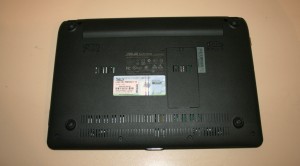
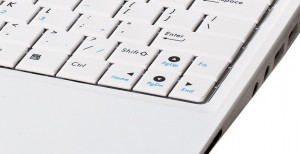
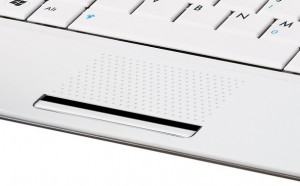
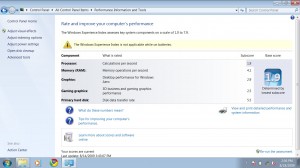
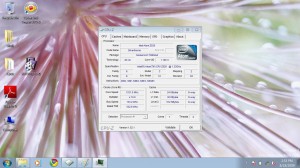
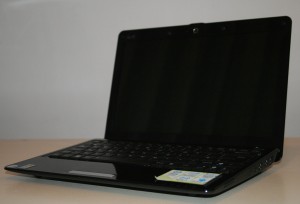
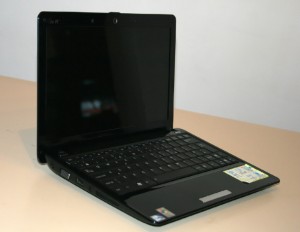

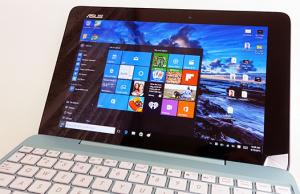
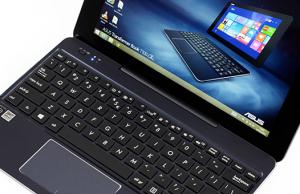
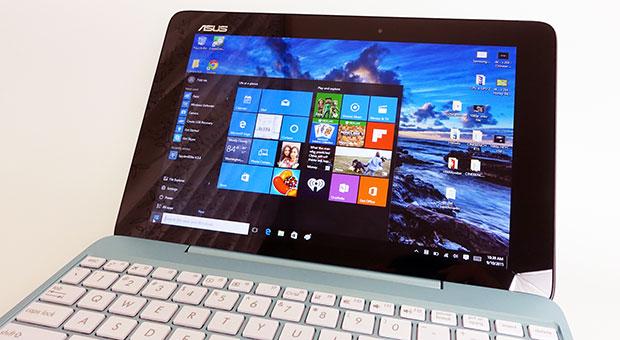









Mike
September 19, 2009 at 3:00 am
Hmmm, i think i got things confused a little bit, thanks for the heads up.
It’s true what you’re saying. The Z520 is in fact weaker than the N270 in terms of raw synthetic CPU performance, with around 30 to 40% .
But in real life, these CPus usualy come with the US15 chipset with the GM500 , while the N270 come with Intel 945 or 950 . Thus, the weaker Z520 are better at graphics than the more powerful Ns . I for one couldn’t run a 1080p on any N, but i could on this 1101HA.
Carl
September 19, 2009 at 12:38 pm
no problem, and that’s interesting about the graphics. I thought that the 950 was better than the 500 (higher number and all). I guess it’s like the intel wifi link 1000 being better than the 5100. But all this doesn’t matter now that Acer has released their aspire one 1410, and the dual core version is right around the corner.